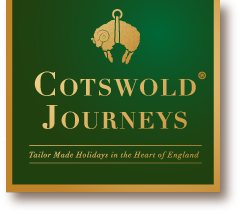There are three main elements, all constructed from local Oolitic limestone: the Kings Men stone circle, the King Stone, and the Whispering Knights. The name “Rollright” is believed to derive from the old English “Hrolla-landriht”, the land of Hrolla. They consist of an arrangement of three Neolithic (around 4000 – 2000 BC) and Bronze Age (2,500 – 800 BC) megalithic monuments (a megalith being a large stone used to construct a structure or monument, either alone or together with other stones) located near to the village of Long Compton. Each of the three groups is distinct in its design and purpose and was built at a different period in late prehistory, indicating a continuous tradition of ritual behavior on sacred ground. The first to be constructed was the ‘Whispering Knights’, which form a dolmen (a type of single-chamber megalithic tomb, usually consisting of three or more upright stones supporting a large flat horizontal capstone). The 5000-year-old burial chamber is thought to be part of a Neolithic long barrow, the Knights being a small group of five stones, 400 yards away from the main stone circle, which were so-named because of the conspiratorial way in which they lean inwards towards each other as if plotting against their king. Four standing stones survive, forming a burial chamber about two square meters in area around a fifth recumbent stone, probably the collapsed roof capstone. In the 1980s George Lambrick and his team revealed that the portal dolmen had never been a part of a longer cairn, as had been suggested in the past.
In 1743, the antiquarian William Stukeley (who pioneered the archaeological investigation of Stonehenge and Avebury) described the Whispering Knights as sitting upon a round barrow, something that Lambrick accepted as being “reasonable in the context of a portal dolmen”, although there may have been other explanations (for example plowing, leading to an accumulation of soil). It is also possible that the stones, as a chamber, were themselves covered in earth, which has, over the centuries, diminished. Ultimately nobody is sure of what would have been here and what role these stones played in it, although it is agreed that the raising of the capstone would have presented a considerable engineering challenge.
The King’s Men make up a stone circle which was constructed in the Late Neolithic or Early Bronze Age. It is possible that it has ritual or trade connections with other similarly disposed circles in the north of England. Consisting of seventy-seven weathered local oolitic limestones, the similarities include similar size and shape, and that they are close-set (it is believed that there originally stood some one hundred and five stones standing shoulder to shoulder), with an astronomically-aligned entrance and a pair of outlying portals.
The King Stone is a single monolith, of uncertain date, but thought to be a Bronze Age grave marker.
Folkloric stories about the stones abound, telling of how they had once been a king and his knights who had been turned to stone by a witch; such stories continued to be taught amongst local people well into the 19th century. There is a stone figure in the porch of the church at nearby Long Compton which local tradition asserts is the figure of a witch. As an old local saying goes “There are enough witches in Long Compton to draw a wagon load of hay up Long Compton Hill “. The figure is actually heavily eroded and almost looks like one of the rollright stones.
In the 20th century, the stones became an important site for adherents of various forms of folk religion, who hold rituals and ceremonies here. The Cotswold Order of Druids, among others, regularly observe festivals here.


0 Comments